What Do Flowers Symbolize Spiritually? Love, Purity!
Flowers carry a rich spiritual symbolism across various cultures, often representing concepts such as love, purity, rebirth, and the cycle of life.
They are integral to many spiritual practices, where they may be used as offerings, symbols of deities, or aids in meditation and healing.
The spiritual symbolism of flowers is deeply embedded in the human experience.
Across different religions and spiritual paths, flowers can signify:
Flowers transcend mere decoration, embodying spiritual truths and serving as a bridge to the divine.

Key Takeaway
5 Flowers: Cultural And Spiritual Meanings
| Flower | Spiritual Symbolism | Cultural/Religious Association |
|---|---|---|
| Rose | Love, Passion | Worldwide, Christianity |
| Lotus | Enlightenment, Purity | Buddhism, Hinduism |
| Lily | Purity, Innocence | Christianity |
| Chrysanthemum | Mourning, Loyalty | Eastern Cultures |
| Orchid | Fertility, Refinement | Various Cultures |
Historical and Cultural Significance
The historical and cultural significance of flowers is multifaceted and deeply ingrained in human society. From ancient civilizations to modern times, flowers have played a pivotal role in various cultural and religious practices.

They have been used to convey messages, express emotions, and mark significant events. Across different cultures, specific flowers hold symbolic meanings, such as the lotus in Buddhism and the rose in Christianity.
Additionally, flowers have been a common motif in art, literature, and folklore, further emphasizing their cultural importance.
Their presence in rituals like weddings, funerals, and religious ceremonies showcases the enduring significance of flowers in human history.
Understanding the historical and cultural context of flowers provides insight into their spiritual symbolism and the profound impact they have had on human society.
Divine and Spiritual Connections
Delving into the realm of divine and spiritual connections, I’ve come to recognize the profound influence flowers have had on shaping religious practices and beliefs throughout history.
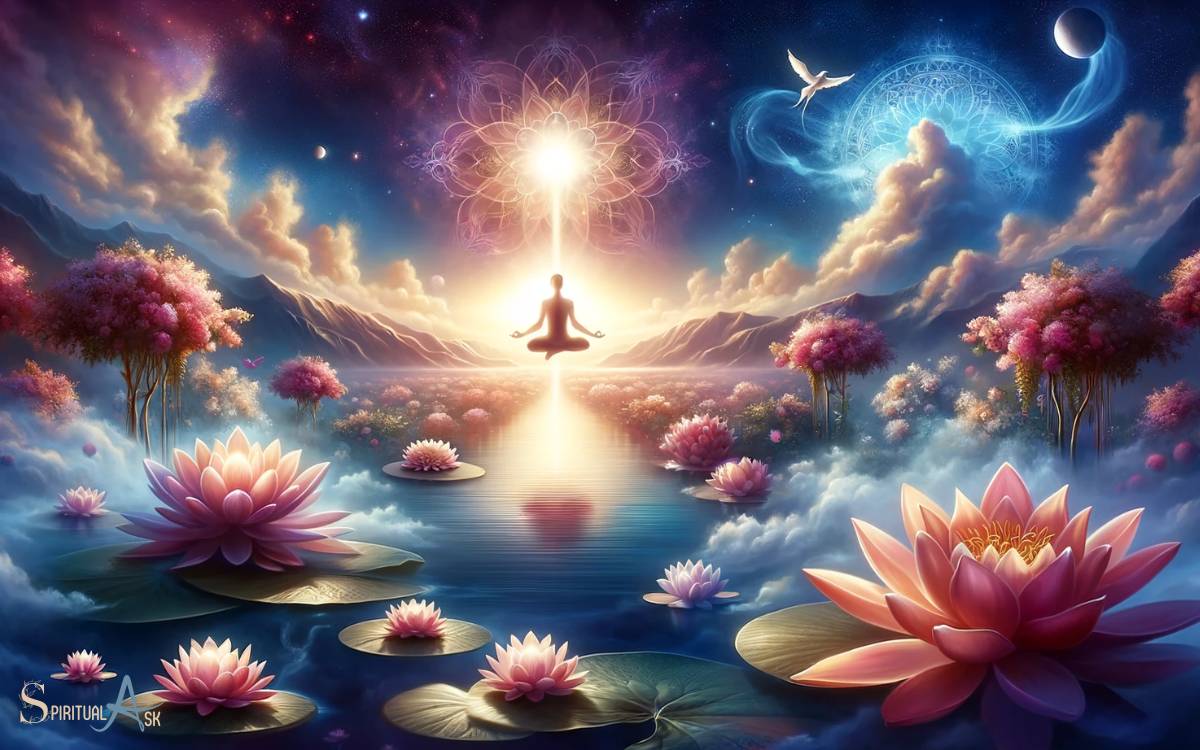
Across various cultures and religions, flowers have been revered for their symbolism and spiritual significance.
Here’s a glimpse into the divine and spiritual connections of some flowers:
| Flower | Divine/Spiritual Connection |
|---|---|
| Lotus | Purity and enlightenment in Hinduism and Buddhism |
| Rose | Love, devotion, and purity in Christianity and Islam |
| Jasmine | Representing purity and simplicity in various spiritual practices |
| Marigold | Signifying life, death, and rebirth in Hinduism and Aztec traditions |
| Lily | Symbolizing purity and renewal in Christianity and Buddhism |
Understanding the divine and spiritual connections of flowers allows us to appreciate their significance in religious rituals and ceremonies.
Symbolism in Different Religions
Now, let’s explore the symbolism of flowers in different religions. In Buddhism, flowers are often used to represent the transient nature of life and the path to enlightenment.
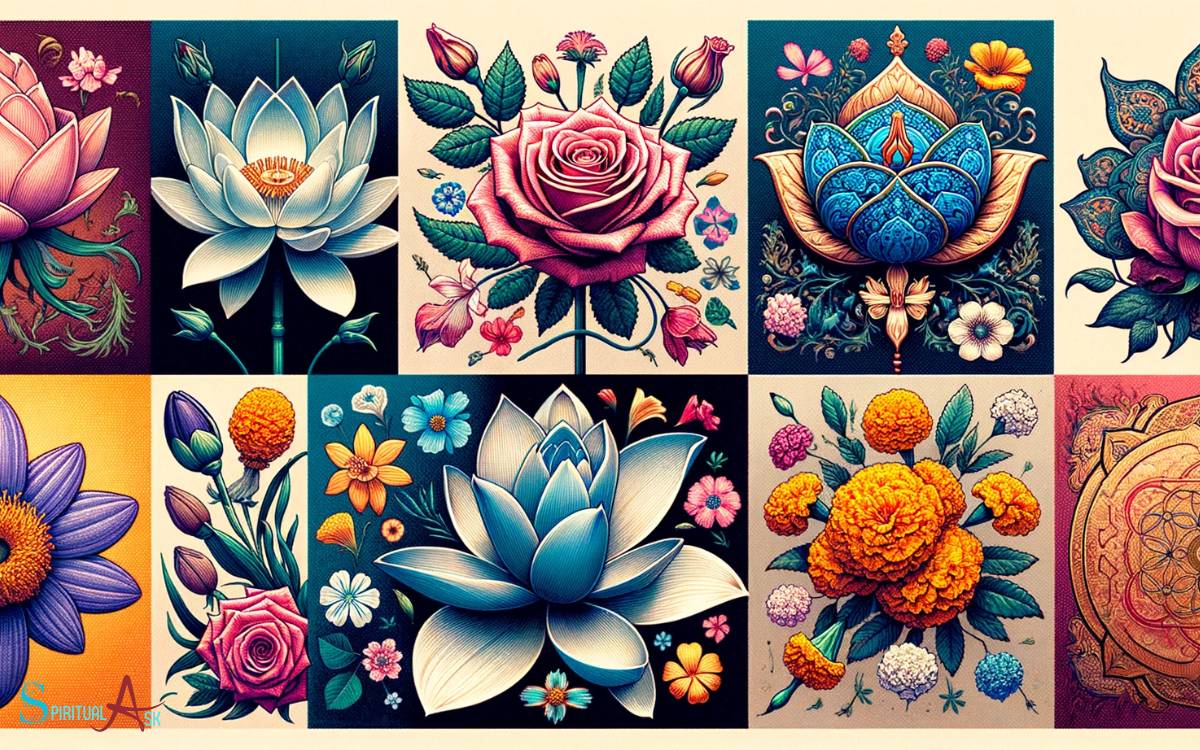
Christianity also incorporates flowers into its symbolism, with certain blooms representing aspects of the faith such as purity or resurrection.
Additionally, in Hinduism, flowers play a significant role in various spiritual practices and rituals, symbolizing offerings to deities and the cycle of birth and rebirth.
Flowers in Buddhism
Why are flowers significant in Buddhism and how do they symbolize spiritual concepts? In Buddhism, flowers hold deep symbolic meanings that reflect important spiritual concepts.
Here are some ways in which flowers are significant in Buddhism:
- Impermanence: Just as flowers bloom and wither, they represent the impermanence of life.
- Purity: Flowers are often used in Buddhist rituals to symbolize purity and the path to enlightenment.
- Offerings: In Buddhist practice, offering flowers is a way to show reverence and gratitude to the Buddha and his teachings.
- Emptiness: The beauty of flowers reminds Buddhists of the concept of emptiness, that nothing exists independently.
- Transcendence: The growth of flowers from mud symbolizes the possibility of transcendence and enlightenment despite worldly challenges.
Symbolism in Christianity
Flowers also hold symbolic significance in Christianity, carrying spiritual meanings that resonate with believers in a similar way to Buddhism.
In Christianity, flowers are often used to adorn altars during religious ceremonies, symbolizing purity, beauty, and the resurrection of Jesus Christ.
For example, the Easter lily represents the resurrection, while the red rose is associated with the blood of Christ.
Additionally, the use of flowers in Christian art and architecture serves as a reminder of the beauty of God’s creation and the transient nature of life. These symbols help Christians connect with their faith on a deeper, more spiritual level.
Understanding the symbolism of flowers in Christianity enriches the religious experience and fosters a sense of connection with the divine.
Spiritual Significance in Hinduism
Exploring the spiritual significance of flowers in Hinduism reveals their profound symbolic meanings in different religions.
In Hinduism, flowers play a significant role in spiritual practices and rituals, symbolizing various concepts such as purity, devotion, and the cycle of birth and rebirth.
Here are some key symbolic meanings of flowers in Hinduism:
- Lotus: Represents purity, enlightenment, and divine beauty.
- Marigold: Symbolizes auspiciousness, prosperity, and the sun.
- Jasmine: Signifies purity, sensuality, and motherhood.
- Tulsi (Holy Basil): Represents devotion, protection, and purification.
- Rose: Symbolizes love, beauty, and devotion to the divine.
Understanding the spiritual significance of these flowers in Hinduism provides a deeper insight into the rich tapestry of symbolism within the religion.
Flowers as Messengers of Emotions
I’ve always been fascinated by how flowers have the ability to convey emotions and sentiments without the need for words. The way we connect certain flowers with specific emotions, whether it’s love, sympathy, or gratitude, is a testament to the deep emotional impact they can have.
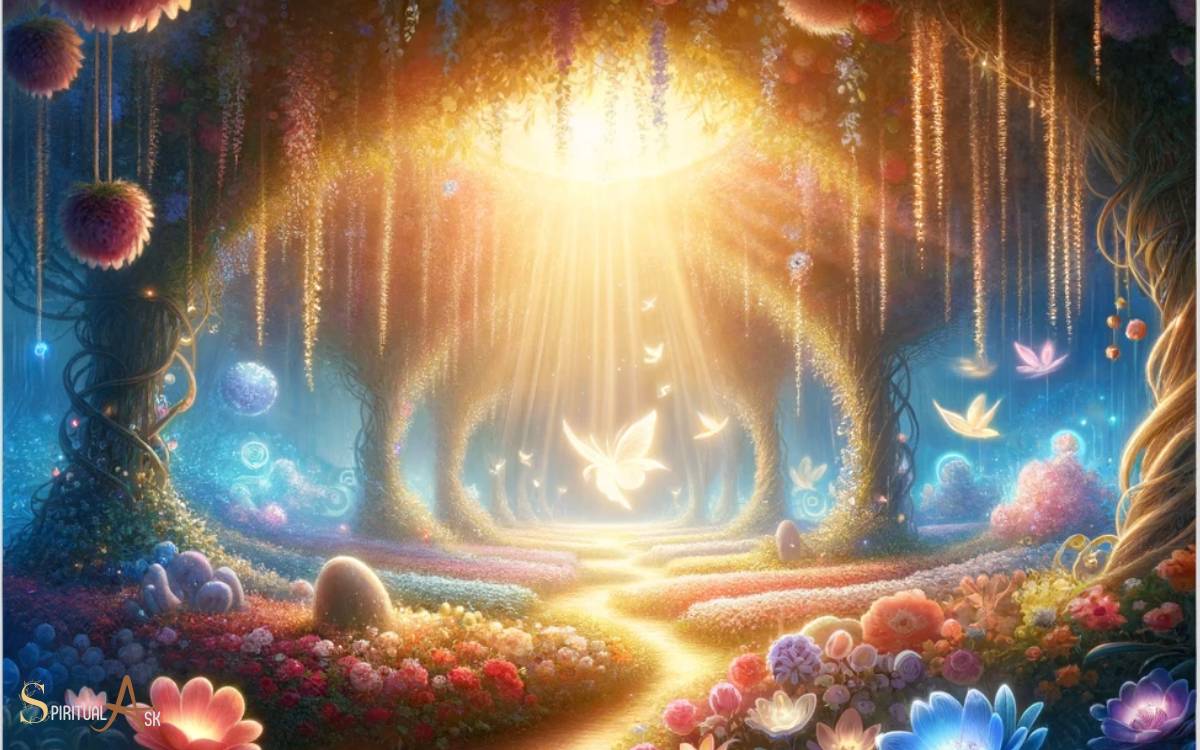
It’s incredible to think about how flowers serve as messengers of our innermost feelings, making them powerful spiritual symbols in various cultures and traditions.
Spiritual Symbolism of Flowers
As someone who believes in the spiritual significance of flowers, I find that they serve as powerful messengers of emotions. Flowers have a unique way of conveying profound feelings and spiritual messages, transcending language barriers.
Here are some ways in which flowers symbolize emotions spiritually:
- Love: Roses symbolize love, passion, and romance.
- Hope: Daisies represent hope, purity, and innocence.
- Peace: White lilies convey peace, tranquility, and a sense of serenity.
- Joy: Sunflowers embody joy, happiness, and vitality.
- Gratitude: Pink carnations symbolize gratitude, appreciation, and thankfulness.
Understanding the spiritual symbolism of flowers can help us connect with our emotions and convey heartfelt messages to others.
Emotional Connections to Flowers
Connecting with flowers emotionally involves appreciating their ability to convey profound feelings and spiritual messages. When I receive a bouquet of vibrant sunflowers, I immediately feel uplifted and joyful.
The bright, cheery petals seem to radiate warmth and positivity, instantly brightening even the gloomiest of days. Similarly, when I am gifted a delicate arrangement of lilies, their soft fragrance and graceful appearance evoke a sense of tranquility and peace within me.
These emotional connections to flowers are powerful and can serve as messengers of our deepest sentiments, whether it’s love, gratitude, sympathy, or hope.
Understanding the emotional impact of flowers allows us to express our feelings in a tangible, heartfelt way, transcending language barriers and touching the hearts of others.
Flowers as Spiritual Messengers
Receiving sunflowers immediately uplifts my spirits, evoking feelings of joy and warmth. Flowers, as spiritual messengers, convey emotions and deeper meanings, serving as a bridge between the physical and spiritual realms.
They are like messengers delivering profound messages from the universe to the recipient, speaking directly to the soul.
Here are some ways flowers act as messengers of emotions:
- Hope: A delicate bloom can bring a sense of hope, reminding us that even in challenging times, beauty and positivity exist.
- Love: The vibrant colors and sweet fragrances of flowers express love and affection, nurturing our hearts and relationships.
- Healing: Flowers can symbolize healing and comfort, offering solace and a sense of peace during difficult moments.
- Gratitude: Giving or receiving flowers communicates gratitude, acknowledging and appreciating the recipient’s presence and actions.
- Renewal: They represent renewal and new beginnings, encouraging us to embrace change and growth.
Healing and Therapeutic Properties
I’ve always been drawn to the healing and therapeutic properties of flowers. Their ability to uplift and soothe the spirit is truly remarkable. Flowers have been used for centuries in various healing practices, from ancient herbal remedies to modern aromatherapy.
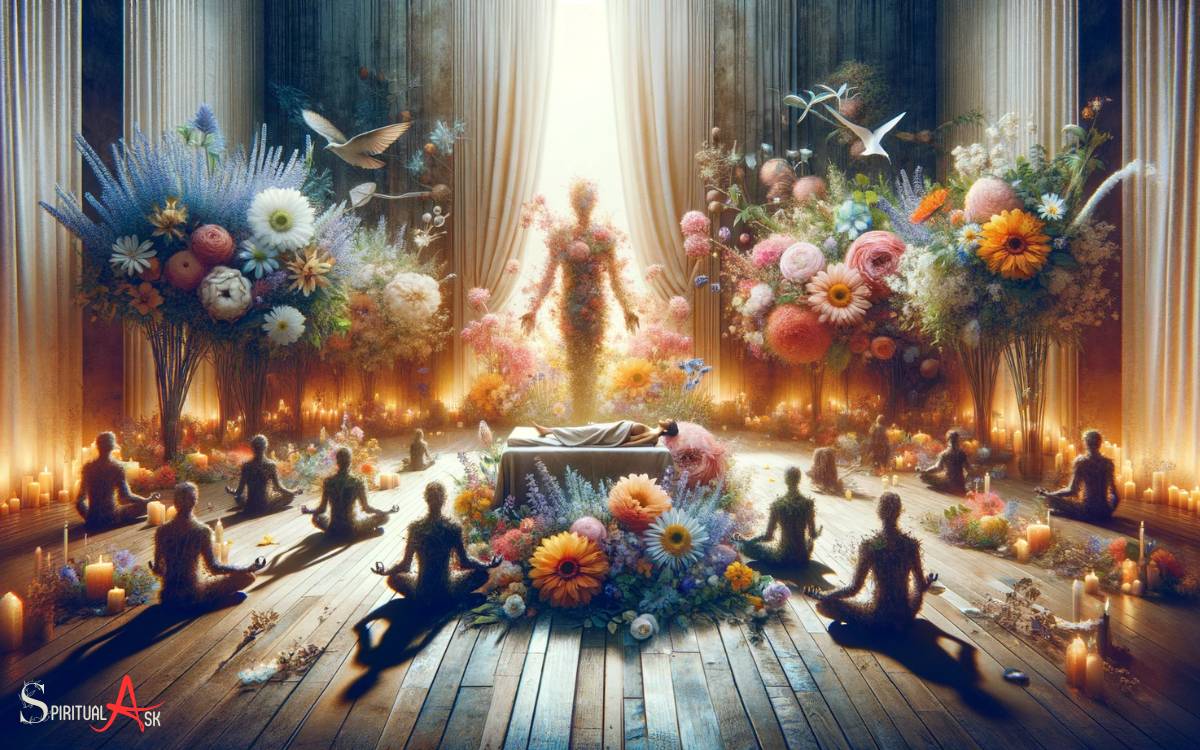
Lavender, for example, is known for its calming effects and is often used to promote relaxation and alleviate anxiety. The vibrant sunflower symbolizes strength and resilience, serving as a reminder of the power of positivity in healing.
Additionally, the gentle scent of roses is often associated with emotional healing and comfort. Whether it’s their vibrant colors, delicate fragrances, or natural healing properties, flowers have a unique way of offering solace and hope to those in need.
It’s no wonder they hold such a special place in the realm of healing and therapy.
Rituals and Ceremonial Uses
Drawn to the healing and therapeutic properties of flowers, I find their significance extends to rituals and ceremonial uses, providing comfort and spiritual connection.
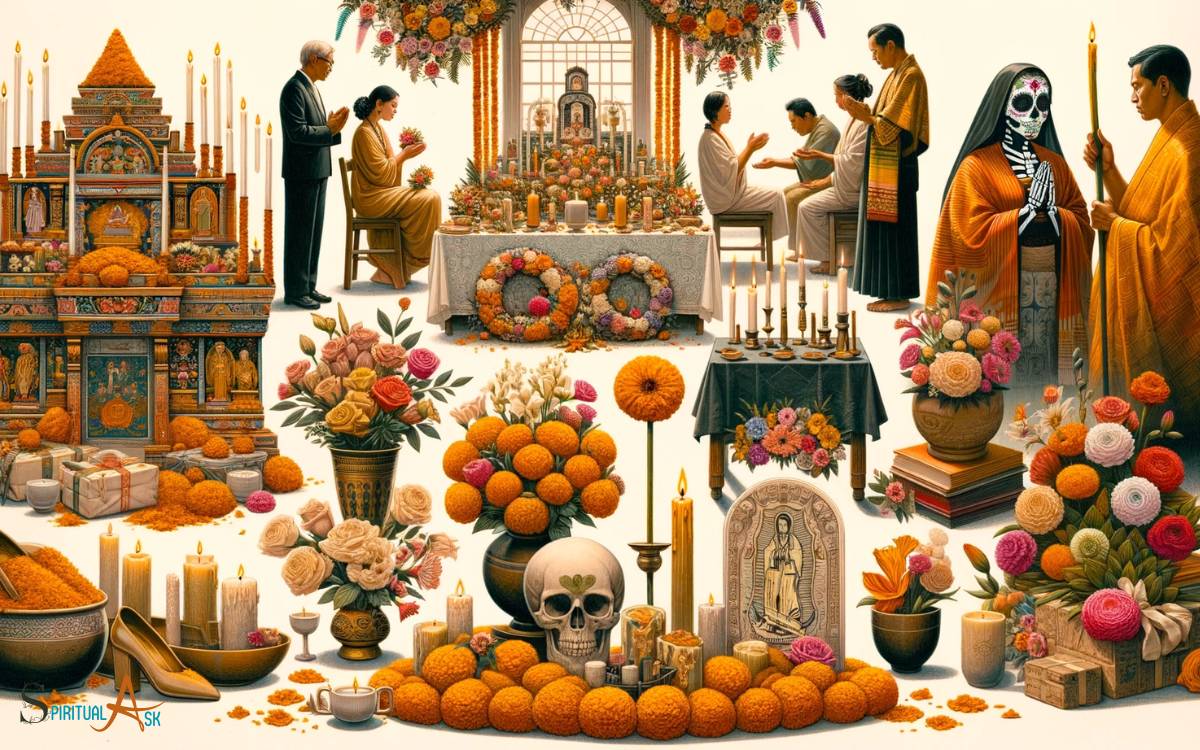
In various cultures and traditions, flowers play a vital role in rituals and ceremonies, symbolizing different aspects of spirituality and life.
Here are some ways flowers are used in rituals and ceremonies:
- Offerings: Flowers are offered to deities and ancestors as a symbol of love, respect, and gratitude.
- Decorations: They are used to adorn sacred spaces during ceremonies, bringing beauty and a sense of purity.
- Cleansing: Certain flowers are used in purification rituals to cleanse the mind, body, and spirit.
- Celebrations: Flowers are a key part of celebrating milestones and joyous occasions, representing new beginnings and growth.
- Memorials: They are used to honor and remember loved ones who have passed, signifying the eternal cycle of life.
Flowers hold a profound spiritual significance in these rituals, enriching the experiences and connecting individuals to something greater than themselves.
Flower Symbolism in Art and Literature
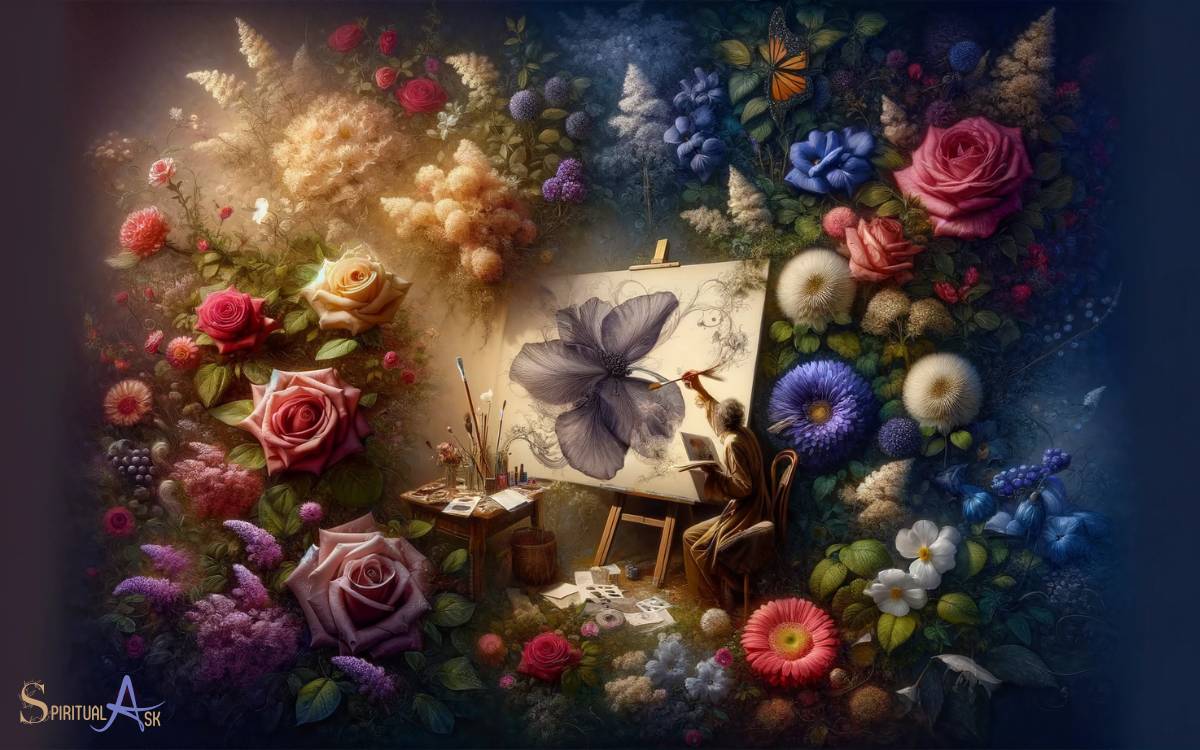
In my exploration of flower symbolism, I’ve encountered captivating representations of flowers in art and literature that reflect profound spiritual meanings. Flowers have been a recurring motif in art and literature, often carrying deep symbolic significance.
Below is a table showcasing some examples of flower symbolism in art and literature:
| Art | Literature |
|---|---|
| Van Gogh’s “Sunflowers” | Shakespeare’s “Hamlet” |
| Georgia O’Keeffe’s work | Tennyson’s “The Lotos-eaters” |
| Japanese cherry blossoms | Sylvia Plath’s poetry |
| Mexican Day of the Dead | Wordsworth’s “I Wandered Lonely as a Cloud” |
These examples illustrate how flowers are used as powerful symbols, conveying spiritual themes such as beauty, transience, and the cycle of life and death in diverse artistic and literary expressions.
Personal and Intuitive Associations
Exploring flower symbolism in a personal and intuitive context, I find myself drawn to the intricate connections between flowers and spiritual meanings in my own experiences and observations.
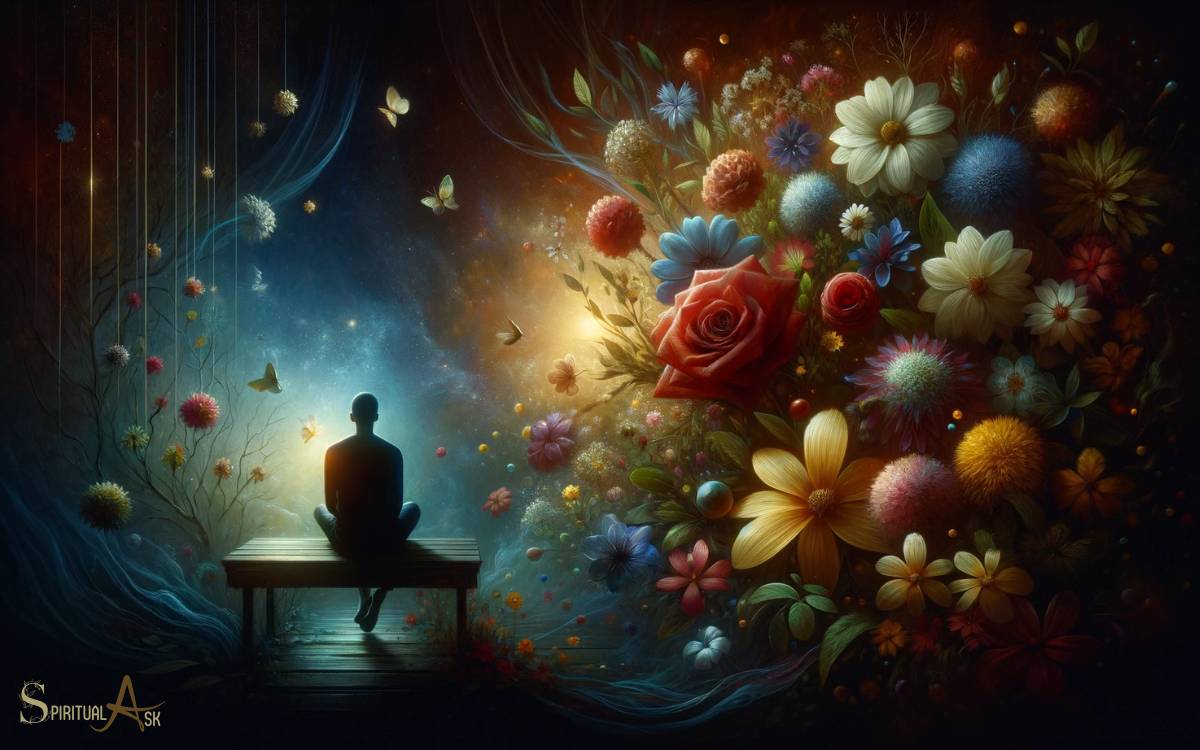
In my journey, I’ve come to associate certain flowers with profound spiritual significance:
- Roses: Represent love and divine beauty, reminding me of the interconnectedness of all living beings.
- Lotus: Symbolizes purity and enlightenment, evoking a sense of inner peace and spiritual growth.
- Lavender: Signifies tranquility and healing, serving as a gentle reminder of the importance of self-care and emotional well-being.
- Sunflowers: Reflect optimism and strength, inspiring me to embrace positivity and resilience in the face of challenges.
- Daisies: Symbolize innocence and simplicity, prompting me to appreciate the beauty in life’s uncomplicated moments.
These personal associations deepen my understanding of the spiritual symbolism of flowers, enriching my own spiritual journey.
Conclusion
Flowers are like spiritual messengers, connecting us to divine energies and emotions. They hold deep historical, cultural, and religious significance, and their therapeutic properties have been recognized for centuries.
Like a colorful tapestry, they weave together the threads of human experience, conveying love, healing, and beauty across time and space.






